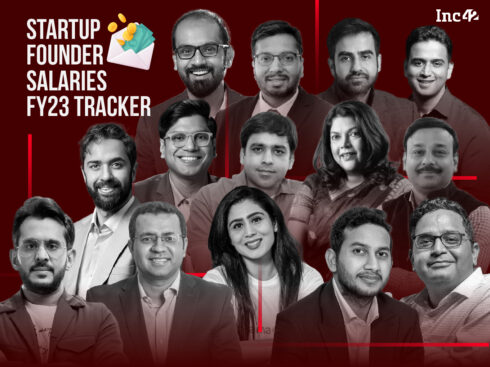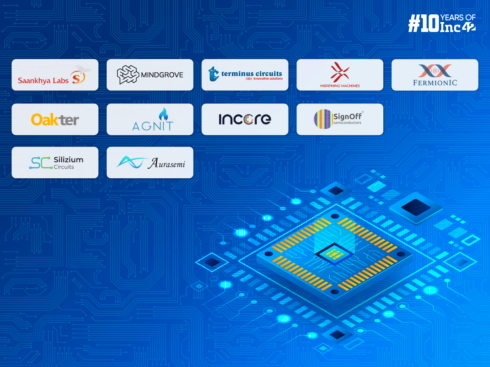
The Indian SaaS ecosystem can generate $50 Bn - $70 Bn in revenue and $500 Bn in enterprise value by 2030, making it important to understand this industry
However, like all other industries, the world of SaaS has its own jargon which are difficult to understand
Inc42 has partnered with LogiNext founder and CEO Dhruvil Sanghvi to unveil the SaaS glossary which will make understanding the ecosystem a cakewalk
With its vibrant startup ecosystem and burgeoning talent pool, India has emerged as a key player in the global SaaS landscape. Government initiatives, development of vertical-specific solutions, and focus on security and compliance are the other factors driving this growth.
The Indian SaaS ecosystem can generate $50 Bn – $70 Bn in revenue and $500 Bn in enterprise value by 2030. With this growth, India can become the second-largest SaaS ecosystem globally.
As such, it’s important to understand the country’s SaaS ecosystem. And a way to do this is by equipping yourself with the essential terminology to communicate smoothly with partners, stakeholders, journalists, and peers.
Like other industries, SaaS too has its own jargon. Recognising this, Inc42 has partnered with LogiNext, the logistics SaaS soonicorn which enhances operations with real-time tracking, route optimisation, transportation and logistics management software.
From ACV and ARPA to CLTV and TAM, the SaaS glossary has all the important terms you need to get an understanding of this space. So, dive into this comprehensive guide to decode the top 25 SaaS terms.
Decoding 25+ Essential SaaS Terms Every Founder Must Know
Annual Recurring Revenue (ARR)
ARR is a key metric used by subscription-based businesses using term-based agreements. ARR normalises the contracted recurring revenue components of term subscriptions to one year. ARR is used almost exclusively in B2B subscription businesses to help the leadership visualise their company growth year-on-year and understand their annual revenue. Read more…
Cross-Selling
Cross-selling involves selling related, supplementary products or services based on the customer’s interest in, or purchase of, one of your business products. It increases customer loyalty and deepens customer relationships, improving customer lifetime value and retention. An example would be an electronics retailer offering deals on computer cases and mouse and screen cleaning wipes to a customer who has just purchased a laptop. Read more….
Customer Lifetime Value (CLTV)
CLTV refers to the total expected sales a single customer will generate throughout the business relationship with a company. This metric is especially useful for SaaS businesses, which use subscription models to handle frequent and repeat purchases. It helps a business optimise customer acquisition and retention strategies. Read more…
Customer Onboarding In SaaS
Customer onboarding in SaaS means acquainting new users with products/services. It is about showing them the ropes, providing them the tools they need to succeed and ensuring a positive experience. B2B SaaS players should add a training module to the onboarding process as each user has a different tech understanding and adaptability level. Read more…
Customer Segmentation
Through customer segmentation, a business categorises its customer base into distinct groups based on critical parameters. A SaaS player may only consider primary data or delve deep into tech aspirations, product innovations and business goals. Based on the data insights revealed by these groups, SaaS businesses need to enhance customer engagement at pre and post-sales levels. Read more…
MVP In SaaS
A minimal viable product in the SaaS industry is a simplified software version that contains enough features for prospects to use and provide feedback. The main objective of an MVP is to validate the primary product before a company invests too much time and money in product development. Read more…
Net Promoter Score
It gauges customer loyalty by asking customers how likely they are to recommend the product or service to others on a scale of 0 to 10. The metric was developed by Fred Reichhels, a partner at Bain & Company, in 2003 to help businesses evaluate customer satisfaction and identify specific areas of improvement. Read more….
Product-Led Growth
It is a strategy where a company focusses on using its product to attract, engage and retain customers. This strategy does not require salespersons, and crucial elements like user acquisition, expansion, conversion, and retention are driven primarily by the product. Read more…
Product-Market Fit
When an entrepreneur identifies a need in the market and builds a solution that customers want to buy, that’s product-market fit. It results from a deep understanding of your customers and their opinions of your brand and product. Read more…
Proof Of Concept
A proof of concept (POC), also known as a proof of principle, is used by early-stage SaaS startups to assess the potential success of a product idea. It enables the product team to test whether the concept is technically feasible and financially viable before raising funds for product development. Read more…
Annual Contract Value (ACV)
ACV is the average annual revenue generated from each customer contract, excluding fees. By understanding the ACV and comparing it with other SaaS metrics, some valuable insights to help guide your business decisions can be pulled out. Read more….
Average Revenue Per Account (ARPA)
ARPA calculates the income generated by each subscription during a specific period, typically on a monthly or annual basis. ARPA is calculated by dividing a business’ monthly or yearly earnings by the total number of paid accounts at that given period. Read more…
CAC Payback Period
The payback period for CAC (customer acquisition cost) refers to the time a business takes to recover the expenses incurred to onboard or acquire new customers. It helps businesses evaluate the success of their customer acquisition efforts. A shorter CAC payback period indicates a favourable business environment. Read more…
Contraction MRR
Contraction monthly recurring revenue (MRR) helps a SaaS business understand how many businesses have downgraded their subscription plans and how many have cancelled their subscriptions. This metric helps SaaS businesses identify their revenue losses and understand why their B2B partners spend less on their SaaS offerings. Read more….
Enterprise SaaS Sales
It is the process of selling high-ticket custom software deals to behemoth organisations. It is a high-stakes game, often requiring multiple sales cycles stretching up to nine months or more. SaaS businesses target enterprises only when they have the right product, a competent sales team and stable revenue streams. Read more…
Expansion MRR
Expansion monthly recurring revenue is used by SaaS businesses to measure the additional MRR generated by existing customers in a given month. It happens when customers buy additional products or services (cross-selling) and/or upgrade to feature-rich and costlier plans (upselling). Read more…
Gross MRR Churn Rates
The gross monthly recurring revenue churn rate is used by SaaS businesses to estimate revenue losses from subscription cancellations or service downgrades by users. It indicates the value of the product or service that prompts users to subscribe, upgrade, downgrade, or cancel the SaaS subscription. Read more…
Hybrid SaaS Sales
Many successful SaaS companies, including Slack, HubSpot and Dropbox, utilise a hybrid SaaS sales approach which combines product-led and sales-led growth. By expanding upmarket and downmarket, this model unlocks a massive total addressable market (TAM). It also generates more customer data and insights to maximise growth opportunities. Read more….
Product Qualified Lead
A product-qualified lead (PQL) is a lead which has experienced meaningful value using the product through a free trial or freemium model. As a result, PQLs are more likely to become customers than other leads. Read more…
TAM
The total addressable market (TAM), or the total available market, means the maximum revenue earned from all potential customers a company can reach for a product or service in a specific market. It provides comprehensive insights into market entry, customer segmentation, product development and resource allocation. Read more…
Upselling
Upselling means pursuing existing customers to buy an upgraded version of a product containing premium features or an array of additional services. It is a popular business strategy designed to meet four primary objectives – increasing monthly recurring revenue (MRR), boosting customer lifetime value (CLV/CLTV), reducing customer acquisition costs (CAC), and enhancing customer loyalty through long-term business relations. Read more….
Renewal Rate
It is a metric to measure the percentage of customers renewing subscriptions when their contracts end. Developing a user-friendly onboarding process, encouraging recently cancelled subscriptions to opt for renewal, and using CRM tools to identify user trends are some of the ways to boost customer renewal rates. Read more…
SaaS Sales Funnel
It is a visualisation-based, non-linear model tracking a prospect’s behaviour and activities (read interest and commitment) before a deal can be closed. As the ultimate goal of SaaS businesses is to turn potential customers and free users into paying subscribers, it helps them identify the gaps that deter would-be buyers. Read more…
Sales-Led GTM
When a company adopts a sales-led go-to-market (GTM) plan, its sales team develops and executes the go-to-market strategy while maintaining sales and marketing benchmarks. A strong GTM strategy can help a SaaS business upsell, cross-sell, generate referrals and mitigate product or service launch risks. Read more…
SQL
A sales-qualified lead (SQL) is a potential customer who has shown a keen interest in a SaaS product or service and is ready to engage with the sales team. These customers will be more open to discussions about the purchase. Read more…






























 Ad-lite browsing experience
Ad-lite browsing experience